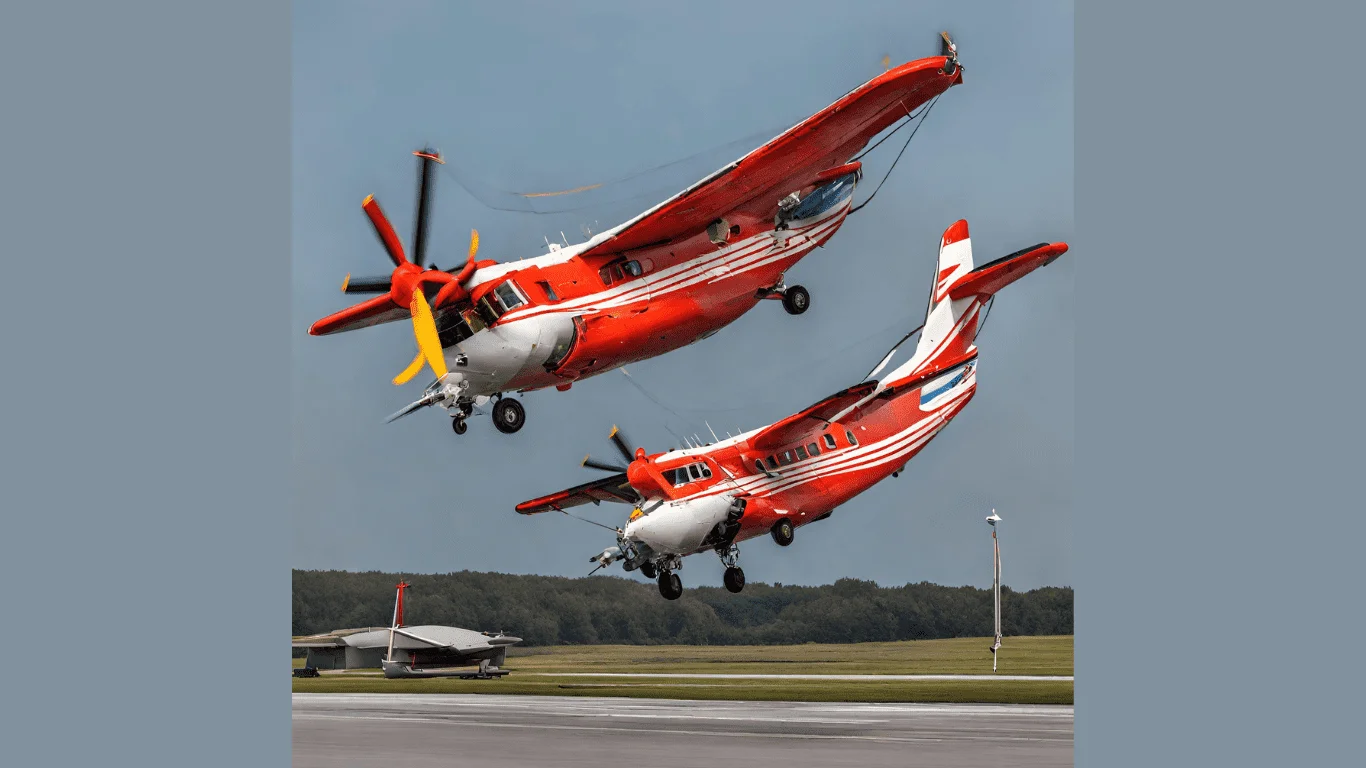Aircraft tugs, the unsung heroes at airports, have a big job. They’re robust vehicles designed to tow planes on the ground.
Picture this: when a plane lands, passengers get off, and the aircraft tug comes in. It hooks up to the plane and smoothly moves it away from the terminal for upcoming airport tasks.
Besides towing, these unique vehicles do a lot to make airports work well. They help planes move around quickly, ensuring they arrive and leave on time.
This allows the ground crews to do their jobs accurately. In the busy world of airport work, aircraft tugs quietly make everything flow, like choreographers behind the scenes, improving how the whole aviation system operates.
What is an aircraft tug, and what is its primary purpose at airports?
An aircraft tug is an exceptional vehicle that helps move aeroplanes on the ground at airports. Its main job is to safely tow airplanes away from the terminal after passengers get off.
The tug connects to the front wheels of the aeroplane and smoothly pulls it away, making things easier for other tasks on the ground.
The main aim is to position aeroplanes correctly for takeoffs or other movements they must make on the airport grounds. Aircraft tugs are crucial for ensuring everything runs well at the airport.
They quietly play a significant role in ensuring aeroplanes move smoothly during arrivals, departures, and when on the ground, like behind-the-scenes choreographers in dance.
How does an aircraft tug connect to an aeroplane, and is it used for arrivals and departures?
An aircraft tug connects to an aeroplane by hooking onto its front wheels. This connection lets the tug pull the aeroplane safely onto the ground. The tug uses special equipment and aligns carefully to ensure the connection is secure.
These tugs are essential when a plane arrives and when it leaves. When a plane lands, the tug connects to it and pulls it away from the terminal, preparing it for what comes next.
During takeoff, the tug helps move the aeroplane away from its parked, guiding it to the runway.
This shows how valuable and flexible these tugs are in ensuring everything runs well on the ground at an airport, making the whole aviation system work smoothly.
Why are aircraft tugs considered crucial in airport logistics?
Aircraft tugs are very important at airports because they help move planes smoothly on the ground. These strong vehicles connect to the front of an airplane and carefully tow it away from the terminal, ensuring everything happens in an organized way when planes arrive and leave.
The critical role of aircraft tugs is to ensure planes are in the right position at the right time, keeping the schedule on track. This efficiency, thanks to aircraft tugs, doesn’t just make the airport work well overall but helps the ground crews do their jobs correctly.
Aircraft tugs are like behind-the-scenes helpers, ensuring everything at the airport flows smoothly, just like a well-practised dance.
Role of Airplane Tugs in Airport Operations
As the powerhouse for ground movements, aircraft tugs ensure that airplanes are efficiently towed to and from the runway.
The importance lies in their ability to facilitate the smooth taxiing of aircraft, reducing the reliance on their engines and conserving fuel.
Beyond mere efficiency, these tugs are instrumental in the overall time management of airport activities, particularly during the critical turnaround between flights.
By swiftly pushing planes back from the gate, they contribute significantly to punctual departures, a vital aspect of maintaining an organized aviation schedule.
Essential Role in Baggage Handling
The essential role of Aircraft Tugs extends to baggage handling on the airport tarmac. After passengers have disembarked, aircraft tugs efficiently tow planes away from the terminal, allowing ground crews to swiftly and safely load and unload baggage.
This separation of the aircraft from the terminal creates a controlled environment for baggage handlers to carry out their tasks precisely and without the operational challenges posed by a live aircraft.
By contributing to the smooth flow of baggage handling operations, aeroplane tugs enhance the overall efficiency of ground services, ensuring that passengers’ belongings are handled promptly and safely as part of the broader airport logistics.
Efficient Taxiing for Aircraft
Efficient aircraft taxiing is made possible by the crucial involvement of airplane tugs on the airport tarmac.
These robust machines attach to the nose gear of aircraft, allowing them to be smoothly towed to and from the runway without relying on their engines.
This ensures a streamlined and orderly flow of ground traffic and brings about significant fuel savings.
Hooking up an aircraft tug to the plane’s nose gear is a carefully coordinated dance for navigating the busy airport grounds. Tugs save fuel and help the environment by towing planes, and avoiding engine use during taxiing.
Precision in Parking and Gate Maneuvering
Precision in parking and gate manoeuvring is a critical function of aeroplane tugs on the airport tarmac. These robust machines are crucial for precisely parking planes at the gate.
The process ensures precise aircraft alignment, maximizing space and aiding smooth ground operations. This precision maximises space and helps ground crews do their jobs accurately—loading baggage, refuelling, and performing maintenance tasks.
Time-Saving in Aircraft Turnaround
After landing, powerful machines quickly connect to the plane’s nose gear for efficient pushback from the gate. This orchestrated movement facilitated by aeroplane tugs ensures a prompt departure for the next flight, avoiding unnecessary delays.
By avoiding engine starts and movement, ground operations become quicker, boosting flight punctuality. Aeroplane tugs optimize airport operations, saving time and resources.
Safety Enhancement on the Tarmac
Safety enhancement on the tarmac is paramount to airport operations, and aeroplane tugs significantly ensure a secure ground environment.
These robust machines reduce accidents by handling aircraft movement during taxiing, pushback, and gate manoeuvres.
They help avoid risks by using aircraft engines less on the ground. This protects valuable assets and, more importantly, ensures the safety of airport personnel and other ground crew members.
Conclusion
In the busy airport routine, aeroplane tugs are like backstage heroes. They ensure smooth luggage movement, keeping ground operations efficient and flights punctual.
These robust machines do essential jobs, from skillfully moving on the runway to saving time when planes turn around. Their work helps the airport run smoothly, keeps people safe, and ensures flights are on schedule.

